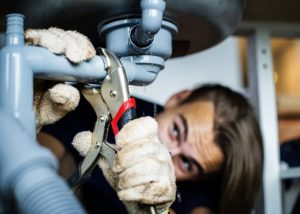Are you currently searching for additional info about Detecting hidden plumbing leaks?

Early discovery of dripping water lines can mitigate a potential calamity. Some tiny water leakages may not be noticeable.
1. Check Out the Water Meter
Every home has a water meter. Checking it is a guaranteed way that assists you uncover leaks. For beginners, turn off all the water sources. Make certain no person will flush, utilize the tap, shower, run the washing maker or dish washer. From there, go to the meter as well as watch if it will certainly transform. Since nobody is using it, there must be no activities. That shows a fast-moving leakage if it relocates. If you discover no modifications, wait a hr or two as well as inspect back once again. This indicates you may have a sluggish leak that could also be below ground.
2. Examine Water Consumption
If you find unexpected adjustments, despite your usage being the very same, it means that you have leaks in your plumbing system. An unexpected spike in your costs shows a fast-moving leak.
On the other hand, a constant increase monthly, despite the exact same routines, reveals you have a slow-moving leakage that's additionally gradually rising. Call a plumber to thoroughly check your residential or commercial property, especially if you really feel a cozy area on your floor with piping below.
3. Do a Food Coloring Examination
30% comes from toilets when it comes to water intake. Examination to see if they are running properly. Decline specks of food shade in the storage tank and also wait 10 minutes. There's a leak in between the tank as well as bowl if the color in some way infiltrates your bowl throughout that time without flushing.
4. Asses Outside Lines
Don't neglect to inspect your outdoor water lines also. Must water seep out of the link, you have a loose rubber gasket. One tiny leakage can squander tons of water and also spike your water costs.
5. Examine and also Evaluate the Scenario
Property owners need to make it a practice to examine under the sink counters and even inside closets for any kind of bad odor or mold growth. These 2 warnings indicate a leak so prompt interest is needed. Doing regular inspections, even bi-annually, can save you from a significant trouble.
Extra importantly, if you know your home is already old, keep a watchful eye on your heating units, pipes, pipelines and so on. Check for discolorations and compromising as many pipes and home appliances have a life span. They will certainly also naturally wear away because of deterioration. Do not wait for it to escalate if you believe dripping water lines in your plumbing system. Call a professional plumber right away so you don't wind up with a terrible mess in your house.
Early discovery of dripping water lines can mitigate a prospective catastrophe. Some little water leakages may not be visible. Inspecting it is a proven means that helps you find leakages. One small leakage can waste heaps of water and also increase your water costs.
If you suspect leaking water lines in your plumbing system, don't wait for it to escalate.
How to Know If Your Home Has a Hidden Leak
Water Meter Reveals Inexplicable Water Usage
If you’d like to test whether or not there’s a leak somewhere in your home, you can do this using your water meter. Here is how to conduct the test:
Don’t use any water in your home for at least 30 minutes; this also means not turning on faucets or water-using appliances.
Go outside, and check your water meter for activity.
If your water meter shows that there was activity, even though no one was using any water, this proves that there is a leak in your home.
Visible Mold or Mildew Growth
Leaks behind walls create moist, dark environments that allow mold and mildew to grow and thrive. Eventually, you might see mold growth forming on the wall closest to a hidden leak.
If mold is growing in an area that receives a high amount of moisture, such as a bathroom, it may simply be an indication that better ventilation is needed. However, if you see mold growth on a wall or the ceiling in an area where you would not expect, you probably have a hidden leak.
Musty, Mildew Odor
Sometimes you might not be able to see the mold or mildew that is growing as a result of a leak. However, the smell can give the problem away just as easily. If you catch a whiff of something musty, there’s a good chance that old water is collecting somewhere in your home that you can’t see.
Stained/Warped Walls, Ceilings, or Floors
When your home soaks up water, a variety of red flags can become visible, including ceiling stains, bubbling drywall, warped walls, and sagging floors. While these issues can be caused by excess humidity, they can also be signs that a pipe or plumbing connection has started leaking behind your walls.
Inexplicably High Water Bill
After a while, you get a general sense for what your water bill should be. If you own a pool or sprinkler system, your bill will tend to be higher during summer. However, if you receive a water bill that seems especially high, and you can’t figure out what caused it, then you may have a hidden leak somewhere that’s increasing your bill.
https://www.plumbingjoint.com/blog/2019/july/how-to-know-if-your-home-has-a-hidden-leak/

Hopefully you enjoyed reading our piece about Leaking water lines. Thanks a lot for taking time to browse our article. Appreciated our piece of writing? Please share it. Let somebody else locate it. We value reading our article about Leaking water lines.
Comments on “Just how to Inspect If Your House Has a Covert Leak”